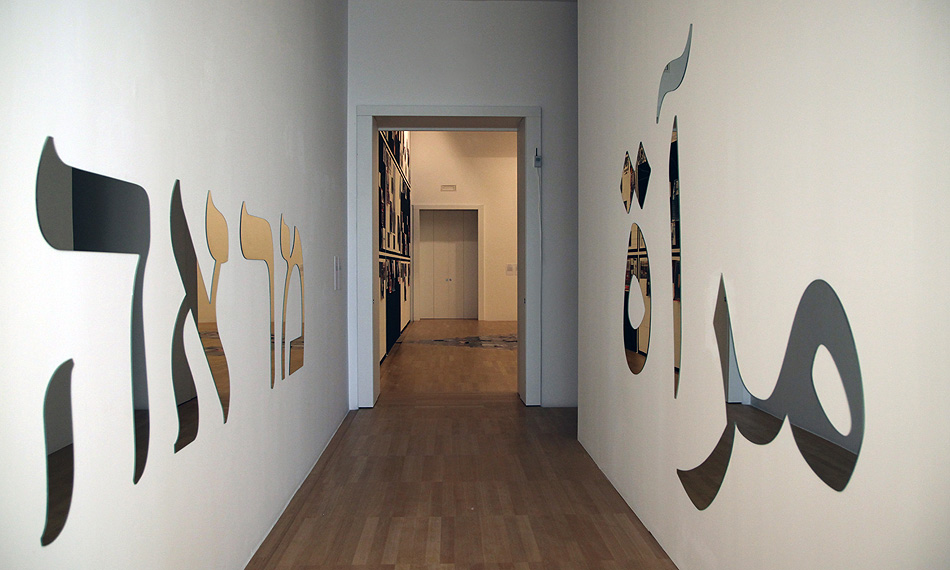
Perfect Language (מראה)(مرآة),i2013
Mirrors
70” x 157”
What do Plato, Dante Alighieri, Guillaume Postel, Raymond Lull, Giovanni Pico della Mirandola, Nicholas of Cusa, Giordano Bruno, Giulio Camillo, Athanasius Kircher, John Wilkins, Francis Lodwick, Leibniz, Ludwik Zamenhof, Bertrand Russell, Ludwig Wittgenstein, Noam Chomsky and Pierre Lévy have all in common? They were all interested (or obsessed) in finding a universal language. While many thinkers have argued about the possible existence of a perfect language, only few have tried to find it.
After examining different models and explanations, Merhi came to the conclusion that a universal language cannot be made out of words but physical elements that can be recognized by anyone, employing the objects certain words denote. For example, he used hundreds of nails to depict the word nail in Korean, or hundreds of magnets to build and show the word magnet in Chinese. Thus, a perfect language functions as a material metalanguage instead of a natural or formal language.

Perfect Language (מראה - مرآة) is comprised by custom cut mirrors that configure the word mirror in Arabic and Hebrew. Both words are placed in front of each other, reflecting their own content as well as the reflections of the passersby. Moving away from the symbolic realm, Merhi’s proposal also has a political twist, where two languages, by cultures that have long been in conflict in Israel/Palestine, are reflected into one another. It is a way to find a perfect languages for the global village.